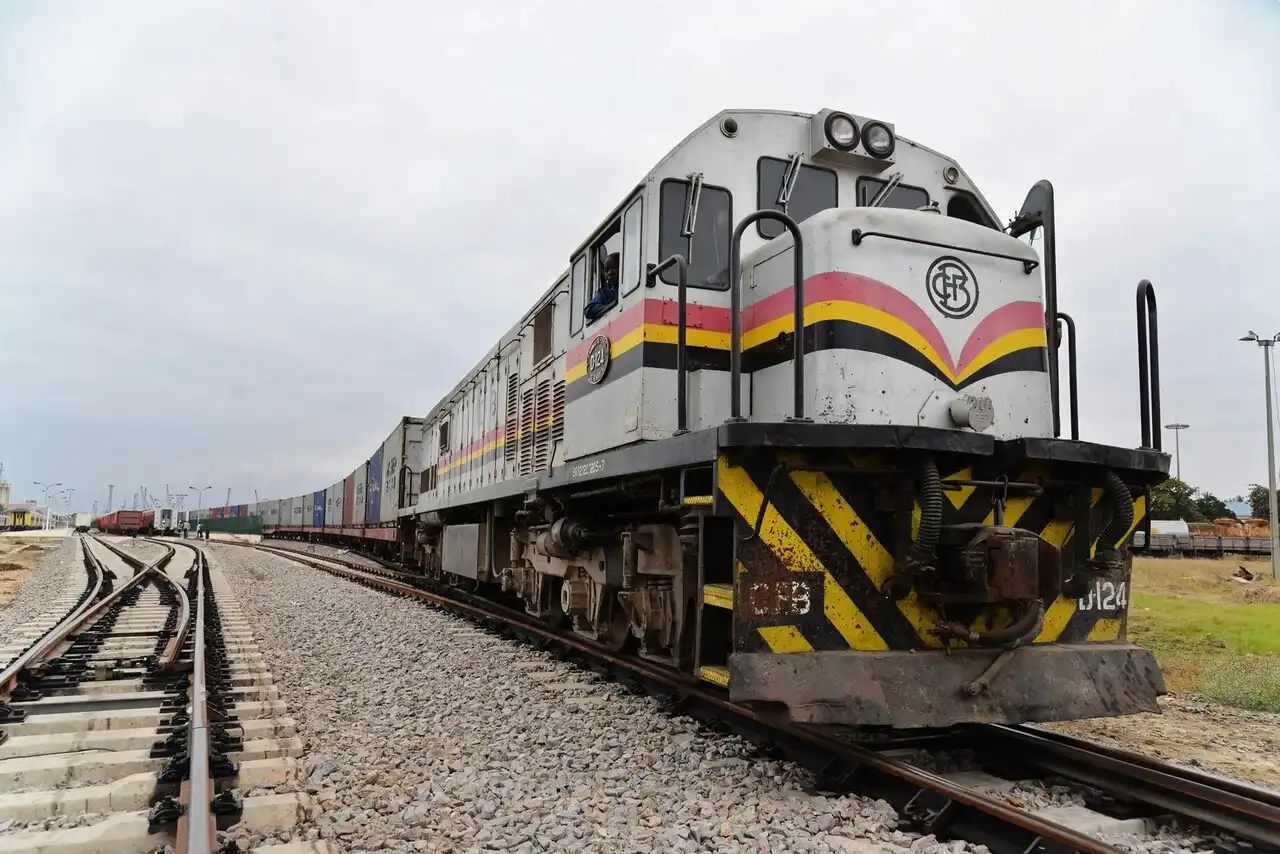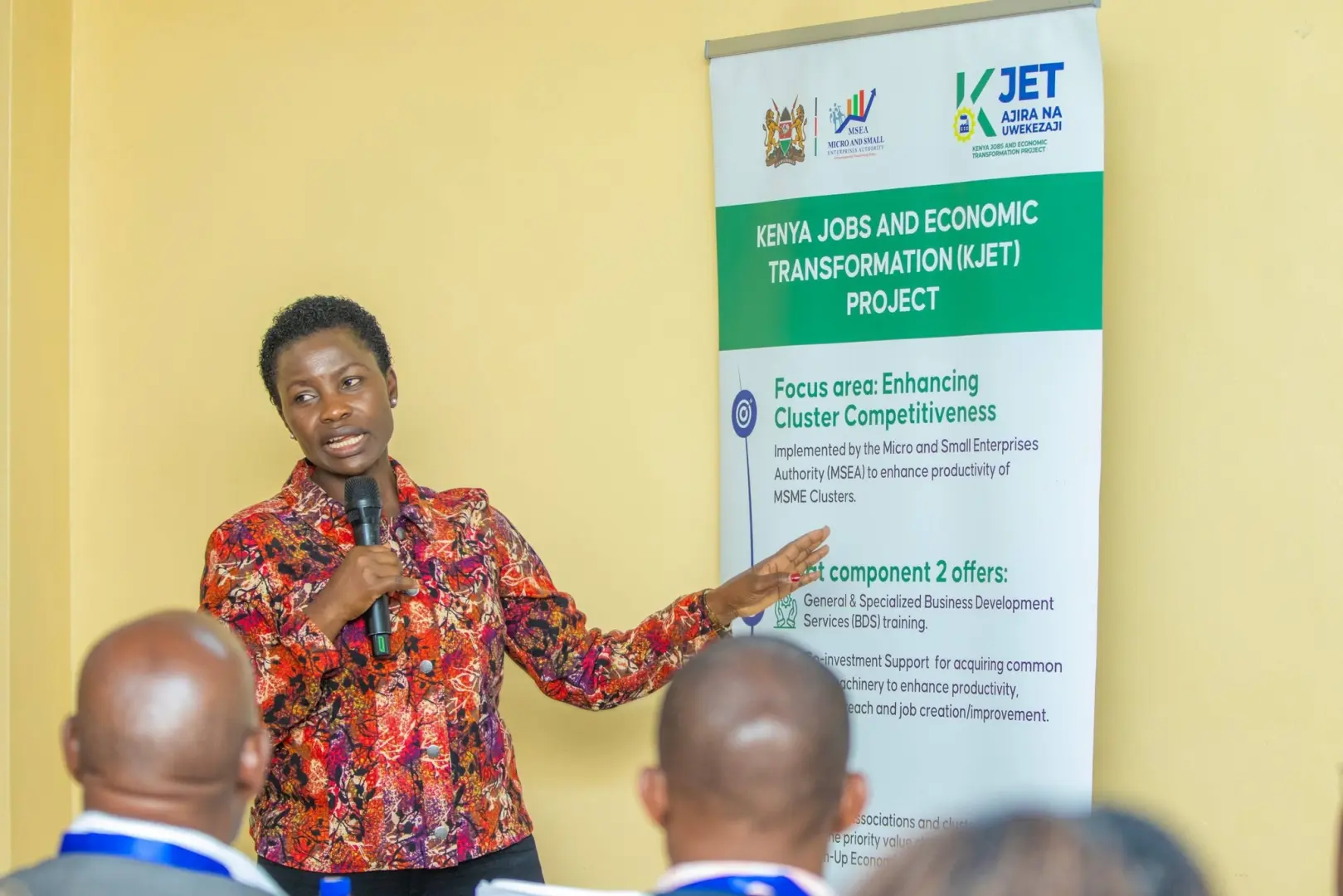Kenya’s economic resilience continues to be underpinned by the unwavering support of its vast diaspora, as remittances hit a remarkable US$440.08 million in May 2025. This figure represents the second-largest monthly inflow ever recorded, narrowly trailing the December 2024 peak of US$445.39 million, signalling robust and consistent growth from Kenyans living and working abroad.
The collective five-month total for 2025 has reached an unprecedented US$2.10 billion, marking the strongest January-to-May performance in the history of Central Bank of Kenya (CBK) records. This represents a sharp 14% increase compared to the same period in 2024, when inflows totaled US$1.84 billion. The impressive surge reflects a confluence of factors, including higher earnings by the diaspora, increasingly robust remittance behaviour, and significant improvements in transfer systems.
With a consistently high monthly average of US419millionyear−to−date,Kenya is now firmly on pace to surpass the ambitious US5 billion mark in diaspora inflows by year-end 2025, assuming this formidable momentum continues for the remainder of the year. This would establish a new annual record, further cementing remittances as Kenya’s most critical source of foreign exchange. Notably, four of the first five months in 2025 rank among the top ten monthly inflows ever recorded, underscoring a rare and impactful consistency in remittance strength.
The Sustained Surge: A Deeper Look at the Numbers
The sustained growth in remittances is not merely a statistical anomaly but a reflection of systemic shifts and enduring connections between Kenyans abroad and their homeland. The 12-month trailing total ending May 2025 reached US$5.01 billion, demonstrating that this is a long-term trend rather than a short-term fluctuation. This consistent upward trajectory has profound implications for Kenya’s macroeconomic stability and household welfare.
Analyzing the Growth Drivers: Beyond the Headlines
Several interconnected factors are fueling this remarkable growth, transforming the landscape of how money flows into Kenya:
1. Enhanced Digital Transfer Channels: The Fintech Revolution
The proliferation of digital transfer channels has been a game-changer for the remittance industry. Services leveraging mobile money, online platforms, and innovative fintech solutions have made sending money to Kenya faster, cheaper, and more convenient than ever before. These platforms circumvent traditional banking bottlenecks, reduce physical travel, and operate with lower overheads, allowing for more competitive exchange rates and reduced transaction fees.
- Mobile Money Integration: Kenya’s pioneering role in mobile money, particularly with M-Pesa, has created a robust infrastructure for instant, direct-to-mobile remittances. This allows recipients in even remote areas to receive funds directly on their phones, significantly increasing financial inclusion.
- Online Remittance Platforms: A growing number of online remittance service providers, both global and local, offer seamless international transfers. These platforms often provide competitive rates and transparent fee structures, empowering the diaspora to choose the most cost-effective channels.
- Blockchain and Emerging Technologies: While still nascent, the exploration of blockchain technology in remittances promises further reductions in costs and processing times, potentially revolutionizing cross-border payments.
These digital innovations have not only improved efficiency but have also fostered greater trust and reliability in remittance flows, encouraging more frequent and smaller transactions.
2. Competitive Remittance Costs: A Win for Senders and Receivers
Increased competition among remittance service providers, spurred by the digital revolution, has driven down the average cost of sending money to Kenya. Regulatory bodies and international organizations have long advocated for lower remittance costs to maximize the impact of these funds on recipient economies. As fees decrease, a larger portion of the hard-earned money sent by the diaspora reaches its intended beneficiaries, leading to greater economic impact.
This competitive environment benefits both senders, who can transfer more value for their money, and recipients, who receive more funds. It also encourages formal channels over informal, often riskier, alternatives, increasing transparency and providing better data for policymakers.
3. A Broader and Growing Migrant Base: The Expanding Kenyan Diaspora
The Kenyan diaspora continues to grow and diversify, establishing communities across the globe. While traditional destinations like North America and Europe remain dominant, Kenyans are increasingly migrating to other regions for work and educational opportunities. This expansion of the migrant base ensures a wider, more resilient network of remittance sources.
Factors contributing to the growth of the diaspora include:
- Skilled Labor Migration: Kenyans with diverse professional qualifications are increasingly sought after in global job markets, particularly in healthcare, IT, and education.
- Educational Opportunities: A significant number of Kenyans pursue higher education abroad, often establishing permanent roots and becoming part of the remittance-sending community.
- Economic Push Factors: Domestic economic conditions, including limited job opportunities and cost of living, continue to motivate Kenyans to seek employment overseas.
The robust social networks within the diaspora also play a crucial role, providing support for new migrants and reinforcing the cultural practice of sending money home.
4. Economic Conditions in Host Countries: A Foundation for Growth
The economic health of countries hosting large Kenyan diaspora populations directly correlates with remittance inflows. Strong labor markets, higher wages, and favorable employment conditions in North America, Europe, and other regions enable Kenyans abroad to earn more and, consequently, send more money home. Recessions or economic downturns in these host countries could, conversely, negatively impact remittance volumes, highlighting the global interconnectedness of these financial flows.
Geographic Breakdown: Unpacking the Sources of Wealth
Understanding the geographical distribution of remittances provides crucial insights into the diaspora’s global footprint and economic contributions. From January to May 2025, the data paints a clear picture:
- North America’s Unrivalled Dominance: Contributing a colossal US251 million, marking its second consecutive month above this threshold and reinforcing its position as the primary lifeline.
- Europe’s Significant Share: Europe followed, sending US370million,representing17.780.5 million, indicating a strong rebound and consistent contribution.
- Rest of the World’s Growing Contribution: The “Rest of the World” category collectively added a substantial US524million,accountingfor25.099 million in April to US$108.1 million in May highlights the increasing diversification of Kenya’s remittance sources and the growing importance of these emerging markets for Kenyan labour.
This geographical diversification is a positive development, as it reduces Kenya’s reliance on any single region for remittances, making the overall flow more resilient to localized economic shocks.
The Unseen Impact: Remittances as Kenya’s Economic Bedrock
Remittances are far more than just financial transactions; they are a socio-economic bedrock for Kenya, touching every facet of life from national balance sheets to individual household well-being.
1. Kenya’s Largest Source of Foreign Exchange
For years, remittances have consistently outperformed traditional foreign exchange earners like tea, tourism, and horticulture. This makes them Kenya’s single largest source of foreign exchange. The importance of this cannot be overstated:
- Balance of Payments Support: Remittance inflows help to offset trade deficits, contributing significantly to a healthy balance of payments. This is crucial for maintaining economic stability.
- Kenyan Shilling Stability: A strong inflow of foreign currency from remittances provides much-needed support for the Kenyan Shilling against major international currencies. This helps to stabilize import costs and contain imported inflation, benefiting consumers and businesses.
- Import Cover: The accumulation of foreign exchange reserves through remittances boosts the country’s import cover, providing a buffer against external shocks and ensuring Kenya can afford essential imports like fuel, machinery, and medicines.
- Investor Confidence: Consistent and strong remittance inflows signal a robust and reliable source of foreign currency, which enhances investor confidence in Kenya’s macroeconomic stability.
2. Direct Impact on Household Welfare and Poverty Reduction
At the household level, remittances are a direct lifeline for millions of Kenyans. They play a critical role in poverty reduction, improving living standards, and fostering human capital development:
- Basic Needs: A significant portion of remittances is used by recipient households to cover daily expenses such as food, rent, and utilities, directly improving their quality of life.
- Education: Funds are frequently allocated to school fees, uniforms, and educational materials, enabling children to access better schooling and breaking cycles of poverty. This investment in human capital has long-term benefits for the nation.
- Healthcare: Remittances often cover medical expenses, including hospital bills, medication, and preventative care, improving health outcomes, especially for vulnerable populations.
- Consumption: The increased purchasing power from remittances stimulates domestic consumption, supporting local businesses and contributing to internal economic demand.
- Rural Development: Remittances often flow disproportionately to rural areas, where many diaspora families originate, contributing to local economies and reducing rural-urban migration pressures.
3. Investment and Entrepreneurship: Fueling Local Economies
Beyond consumption, a notable portion of remittances is channeled into productive investments, stimulating local economies and fostering entrepreneurship:
- Real Estate: Many diaspora members invest in land and property development, both for personal use and as income-generating assets. This fuels the construction sector and creates jobs.
- Small and Medium-sized Enterprises (SMEs): Remittances are a crucial source of seed capital or expansion funds for small businesses in Kenya, particularly in trade, services, and agriculture. This supports job creation and economic diversification at the grassroots level.
- Agriculture: Funds are often invested in improving farming techniques, purchasing inputs, and expanding agricultural ventures, enhancing food security and rural livelihoods.
This productive use of remittances underscores their role as a catalyst for sustainable economic development, moving beyond mere consumption to genuine wealth creation.
Outlook and Potential Headwinds: Navigating Future Challenges
While the trajectory for Kenyan remittances in 2025 appears overwhelmingly positive, projecting approximately US$5.23 billion by year-end, it is essential to acknowledge potential headwinds and risks that could impact this momentum.
1. Global Labor Market Volatility
The continued strength of remittances is heavily dependent on the stability and growth of global labor markets, especially in key host countries. Any significant economic slowdown, recession, or increase in unemployment in North America, Europe, or the Middle East could directly affect the earning capacity of the Kenyan diaspora, leading to reduced remittance volumes. Furthermore, changes in immigration policies or increased competition for jobs in host countries could also pose challenges.
2. Potential Increases in Transfer Costs/Taxes
The threat of increased transfer costs or the imposition of new taxes on remittances looms as a significant risk. The news content specifically highlights a potential US plan to impose a 5% tax on remittances. Such a tax, if implemented, would directly reduce the net amount received by families in Kenya, effectively increasing the cost of sending money. Similar policy discussions could emerge in other host countries. These measures could disincentivize formal remittance channels and potentially push some transfers into informal, less transparent routes.
3. Geopolitical Instability and Conflicts
Geopolitical events, conflicts, or political instability in regions hosting significant Kenyan diaspora populations can disrupt remittance flows. For instance, crises in the Middle East or political unrest in certain European countries could lead to job losses, displacement, or challenges in accessing transfer services, directly impacting remittances.
4. Exchange Rate Fluctuations
While a strong inflow of remittances generally supports the Kenyan Shilling, significant fluctuations in exchange rates can affect the perceived value of these funds. A stronger Kenyan Shilling, while good for import costs, might make remittances feel “less” valuable in local currency terms to recipients, potentially affecting consumption patterns or investment decisions. Senders might also choose to delay transfers if they anticipate a more favorable exchange rate in the future.
Government Engagement and the Diaspora: A Strategic Partnership
Recognizing the immense contribution of the diaspora, the Kenyan government has increasingly prioritized engagement with this vital constituency. Efforts are underway to institutionalize the relationship and maximize the developmental impact of remittances:
- Diaspora Affairs Desks: Establishment of dedicated departments or desks within government ministries and embassies to cater to the needs and concerns of Kenyans abroad.
- Diaspora Bonds: The issuance of government bonds specifically targeted at the diaspora, offering an opportunity for Kenyans abroad to invest directly in national development projects while earning competitive returns. This taps into the productive savings of the diaspora.
- Investment Forums and Opportunities: Organizing forums and creating tailored investment opportunities (e.g., in real estate, agribusiness, technology) to channel remittances from consumption towards productive ventures.
- Policy Dialogue: Engaging the diaspora in policy discussions to understand their needs, challenges, and ideas for national development.
- Protection of Migrant Workers: Collaborating with host governments to ensure the welfare and rights of Kenyan migrant workers, which indirectly supports sustained remittance flows.
These initiatives aim to deepen the partnership between the government and its diaspora, transforming remittances from mere financial transfers into a strategic tool for national development and a source of national pride.
Conclusion: A Cornerstone of Kenya’s Economic Future
Kenya’s remittance story in 2025 is one of remarkable growth and enduring significance. The record-breaking inflows in May, coupled with the strong year-to-date performance, underscore the diaspora’s indispensable role as the nation’s leading source of foreign exchange. These funds not only bolster macroeconomic stability by supporting the Shilling and building reserves but also directly improve the lives of millions of households, funding essential needs, education, healthcare, and stimulating local investment.
While potential challenges such as global labor market volatility and proposed remittance taxes require careful monitoring and strategic responses, the fundamental drivers of growth—enhanced digital channels, competitive costs, and an expanding diaspora—appear robust. The government’s proactive engagement with its citizens abroad, coupled with initiatives to channel remittances into productive sectors, positions Kenya to leverage this vital resource for long-term sustainable development. The consistent flow of over $5 billion annually from the diaspora is not just a testament to familial ties; it is a powerful statement of economic strength, resilience, and the promising future of Kenya.
Ready to take your career to the next level? Join our dynamic courses: ACCA, HESI A2, ATI TEAS 7 , HESI EXIT , NCLEX – RN and NCLEX – PN, Financial Literacy!🌟 Dive into a world of opportunities and empower yourself for success. Explore more at Serrari Ed and start your exciting journey today! ✨
Photo source: Google
By: Montel Kamau
Serrari Financial Analyst
23rd June, 2025
Article, Financial and News Disclaimer
The Value of a Financial Advisor
While this article offers valuable insights, it is essential to recognize that personal finance can be highly complex and unique to each individual. A financial advisor provides professional expertise and personalized guidance to help you make well-informed decisions tailored to your specific circumstances and goals.
Beyond offering knowledge, a financial advisor serves as a trusted partner to help you stay disciplined, avoid common pitfalls, and remain focused on your long-term objectives. Their perspective and experience can complement your own efforts, enhancing your financial well-being and ensuring a more confident approach to managing your finances.
Disclaimer: This article is for informational purposes only and does not constitute financial advice. Readers are encouraged to consult a licensed financial advisor to obtain guidance specific to their financial situation.
Article and News Disclaimer
The information provided on www.serrarigroup.com is for general informational purposes only. While we strive to keep the information up to date and accurate, we make no representations or warranties of any kind, express or implied, about the completeness, accuracy, reliability, suitability, or availability with respect to the website or the information, products, services, or related graphics contained on the website for any purpose. Any reliance you place on such information is therefore strictly at your own risk.
www.serrarigroup.com is not responsible for any errors or omissions, or for the results obtained from the use of this information. All information on the website is provided on an as-is basis, with no guarantee of completeness, accuracy, timeliness, or of the results obtained from the use of this information, and without warranty of any kind, express or implied, including but not limited to warranties of performance, merchantability, and fitness for a particular purpose.
In no event will www.serrarigroup.com be liable to you or anyone else for any decision made or action taken in reliance on the information provided on the website or for any consequential, special, or similar damages, even if advised of the possibility of such damages.
The articles, news, and information presented on www.serrarigroup.com reflect the opinions of the respective authors and contributors and do not necessarily represent the views of the website or its management. Any views or opinions expressed are solely those of the individual authors and do not represent the website's views or opinions as a whole.
The content on www.serrarigroup.com may include links to external websites, which are provided for convenience and informational purposes only. We have no control over the nature, content, and availability of those sites. The inclusion of any links does not necessarily imply a recommendation or endorsement of the views expressed within them.
Every effort is made to keep the website up and running smoothly. However, www.serrarigroup.com takes no responsibility for, and will not be liable for, the website being temporarily unavailable due to technical issues beyond our control.
Please note that laws, regulations, and information can change rapidly, and we advise you to conduct further research and seek professional advice when necessary.
By using www.serrarigroup.com, you agree to this disclaimer and its terms. If you do not agree with this disclaimer, please do not use the website.
www.serrarigroup.com, reserves the right to update, modify, or remove any part of this disclaimer without prior notice. It is your responsibility to review this disclaimer periodically for changes.
Serrari Group 2025
















